Abstract
A 1-year study of marine water sample from six beach locations showed that the most-probable-number method failed to recover significant numbers of coli-forms. Modifying this method by transferring, after 48 h, presumptive negatives (growth and no gas production) to confirmed and fecal coliform media significantly improved recovery. Tests which were presumptive negative but confirmed as fecal coliform positive were designated as false negatives. Most-probable-number method false negatives occurred throughout the year, with 143 of 270 samples collected producing false negatives. More than 50% of fecal coliform false-negative isolates were Escherichia coli. Inclusion of false-negative tubes into the coliform most-probable-number method data resulted in increased violation of the California ocean water contact sports standard at all sites. More than 20% of the samples collected were in violation of this standard. These data indicate that modification of the most-probable-number method increases detection of coliform numbers in the marine environment.
Full text
PDF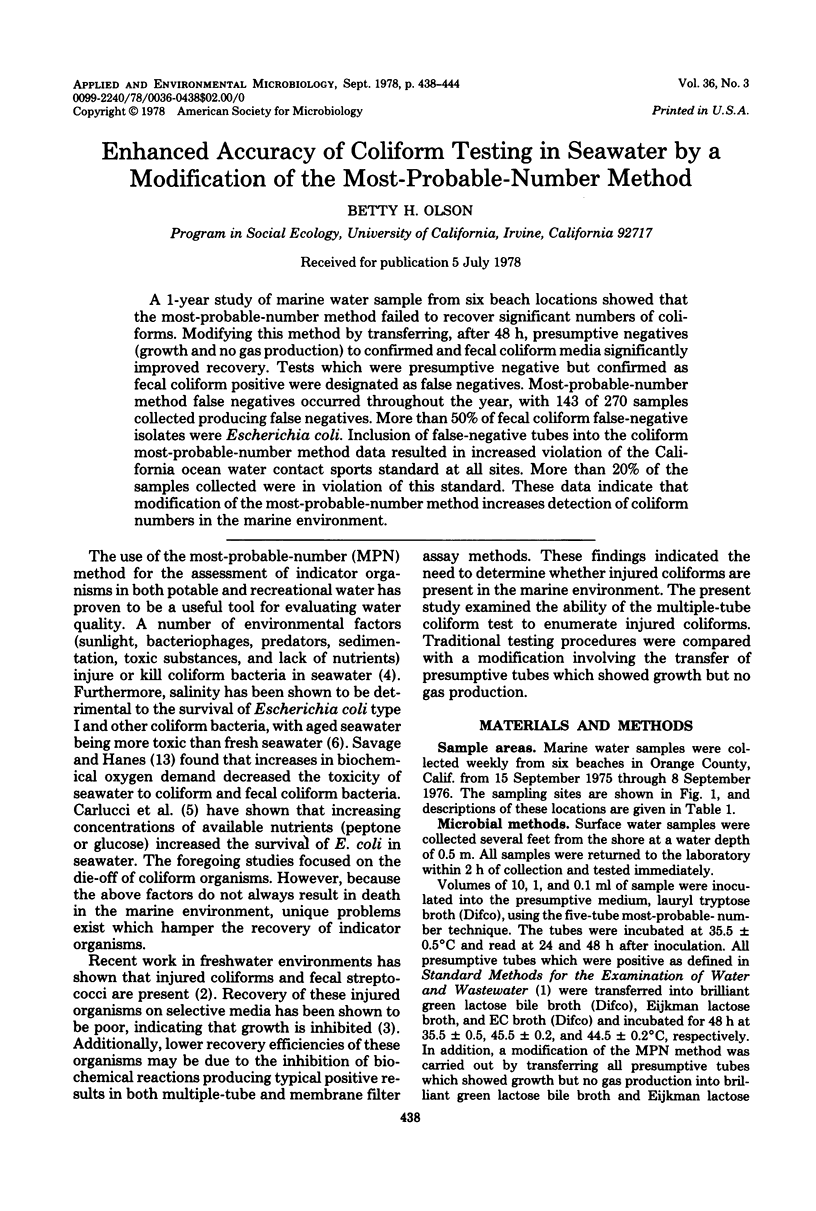

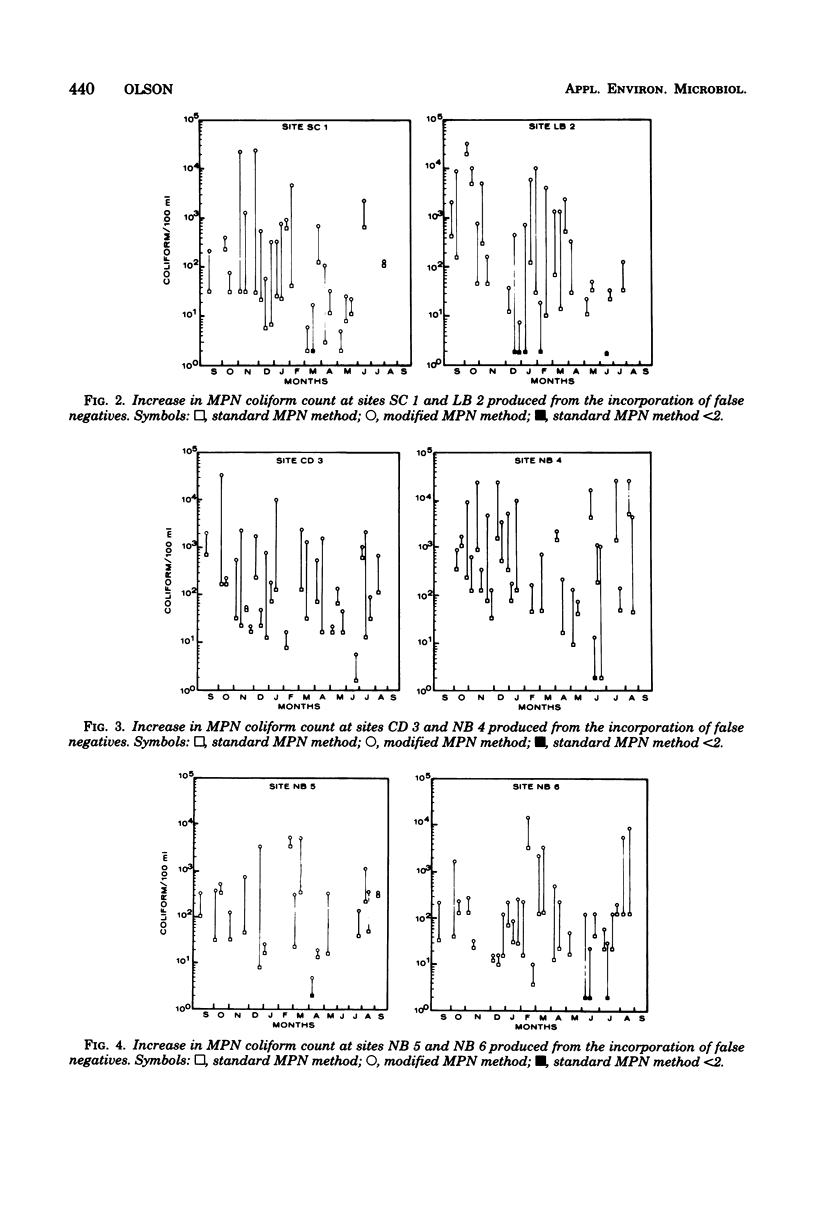
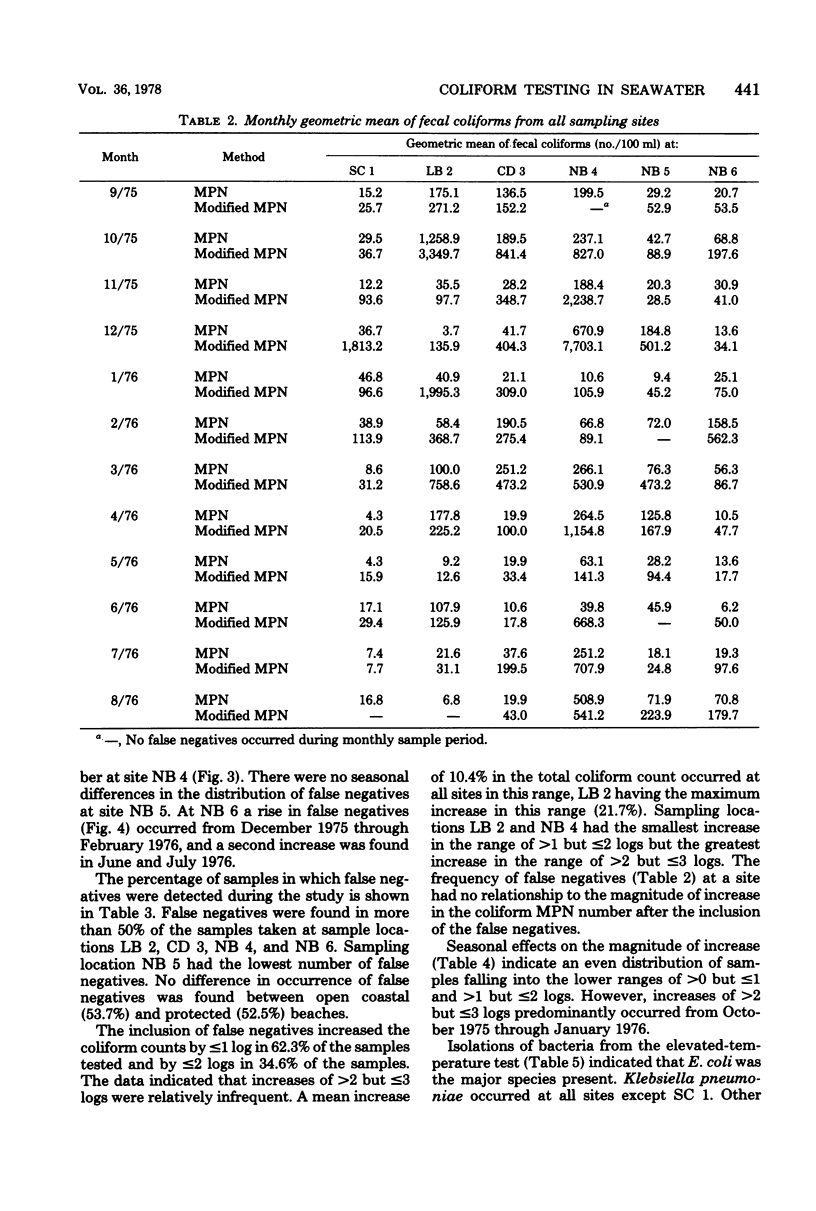
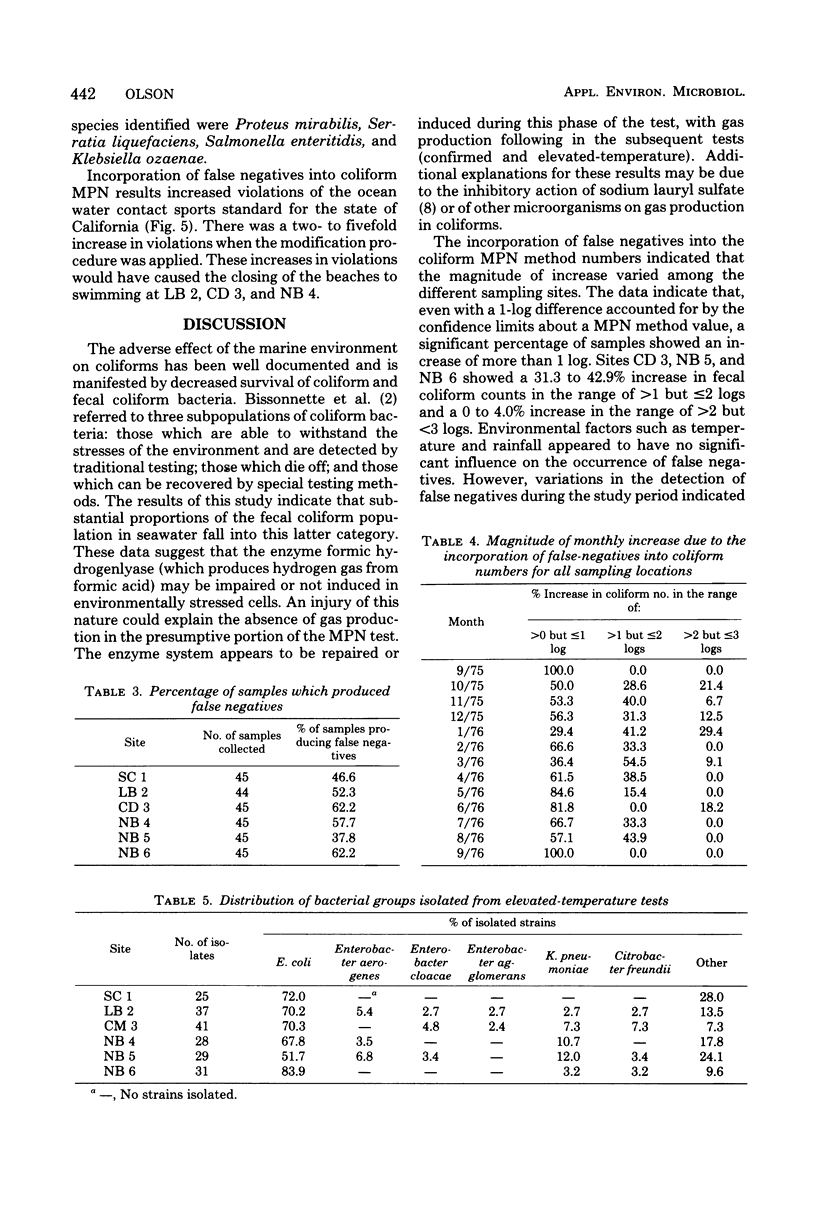
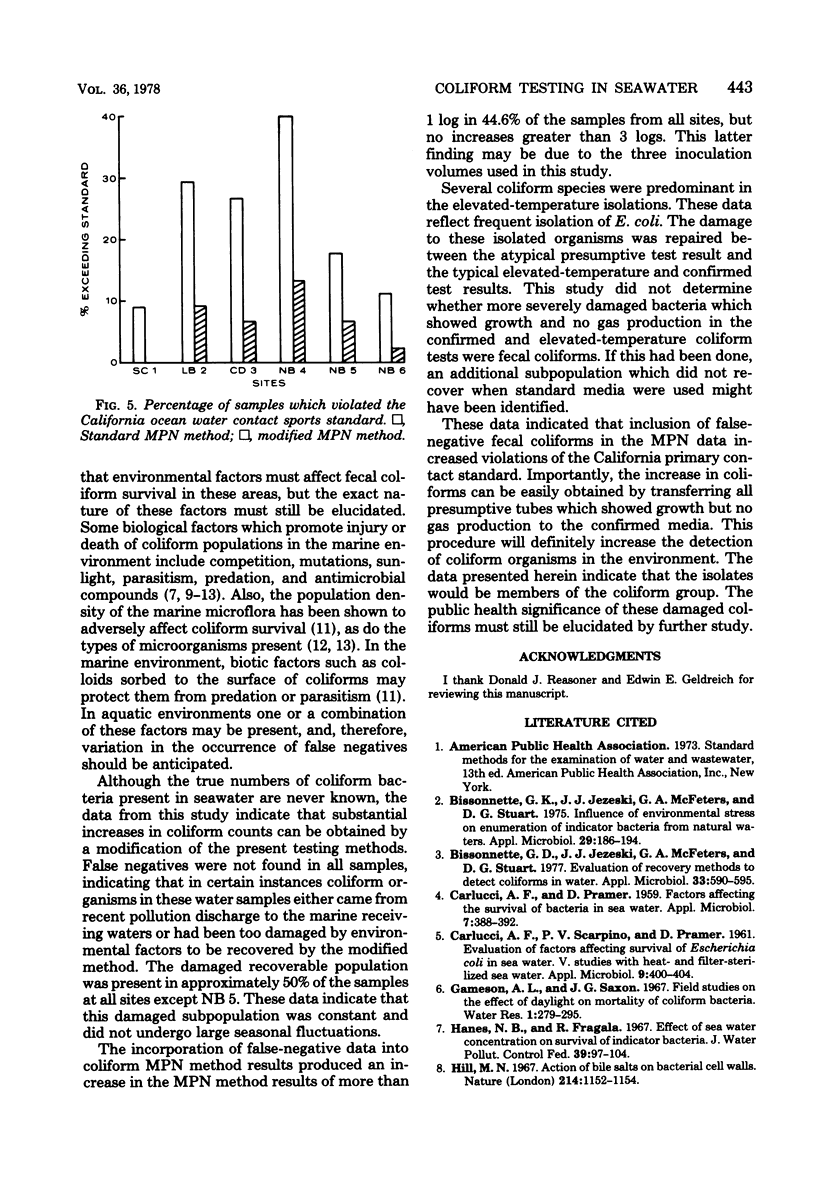

Selected References
These references are in PubMed. This may not be the complete list of references from this article.
- Bissonnette G. K., Jezeski J. J., McFeters G. A., Stuart D. G. Evaluation of recovery methods to detect coliforms in water. Appl Environ Microbiol. 1977 Mar;33(3):590–595. doi: 10.1128/aem.33.3.590-595.1977. [DOI] [PMC free article] [PubMed] [Google Scholar]
- Bissonnette G. K., Jezeski J. J., McFeters G. A., Stuart D. G. Influence of environmental stress on enumeration of indicator bacteria from natural waters. Appl Microbiol. 1975 Feb;29(2):186–194. doi: 10.1128/am.29.2.186-194.1975. [DOI] [PMC free article] [PubMed] [Google Scholar]
- CARLUCCI A. F., PRAMER D. Factors affecting the survival of bacteria in sea water. Appl Microbiol. 1959 Nov;7:388–392. doi: 10.1128/am.7.6.388-392.1959. [DOI] [PMC free article] [PubMed] [Google Scholar]
- CARLUCCI A. F., SCARPINO P. V., PRAMER D. Evaluation of factors affecting survival of Escherichia coli in sea water. V. Studies with heat- and filter-sterilized sea water. Appl Microbiol. 1961 Sep;9:400–404. doi: 10.1128/am.9.5.400-404.1961. [DOI] [PMC free article] [PubMed] [Google Scholar]
- Hanes N. B., Fragala R. Effect of seawater concentration on survival of indicator bacteria. J Water Pollut Control Fed. 1967 Jan;39(1):97–104. [PubMed] [Google Scholar]
- Hill M. J. Action of bile salts on bacterial cell walls. Nature. 1967 Jun 10;214(5093):1152–1154. doi: 10.1038/2141152a0. [DOI] [PubMed] [Google Scholar]
- JOHANNESSON J. K. Nature of the bactericidal agent in sea water. Nature. 1957 Aug 10;180(4580):285–286. doi: 10.1038/180285a0. [DOI] [PubMed] [Google Scholar]
- Savage H. P., Hanes N. B. Toxicity of seawater to coliform bacteria. J Water Pollut Control Fed. 1971 May;43(5):854–861. [PubMed] [Google Scholar]


